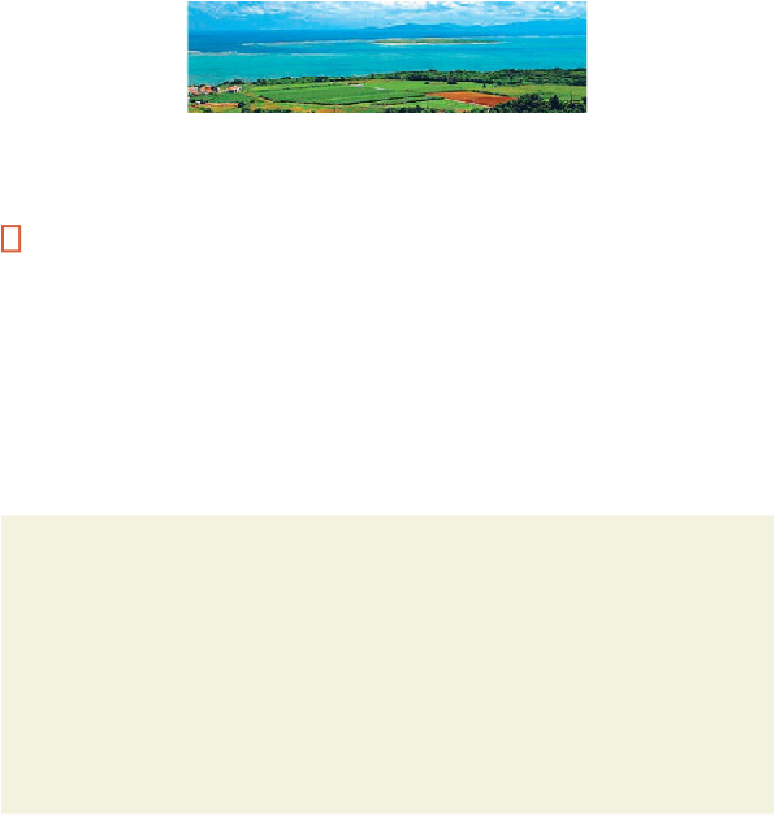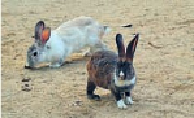Travel Reference
In-Depth Information
enjoys a meal, drinks an Orion and gazes at the stars. There's no pollution here and all the
Milky Way's limitless expanse is above.
The tiny islet of Kayama, more or less a rounded rectangle, is ringed by beaches and covered with vegeta-
tion. This view of it is taken from sugar cane-covered Kohama islet to its south.
3
HAMAJIMA
浜島
More a sandbar than an island, the tiny almost-islet of Hamajima lies a little less than 3 miles
(5 kilometers) northwest of Taketomi, 7 miles (12 kilometers) west of Ishigaki Port and 2
miles (3 kilometers) east of Kayama. Hamajima (
浜島
; Hama-jima; lit. “Beach Island”) does
not appear on most maps of the Yaeyamas. At its greatest length Hamajima is not quite 985
feet (300 meters) across the two ends of its east-west oriented crescent shape. The widest
sections of the islet's surface measure from 80 to 165 feet (25 to 50 meters). There are a few
patches of rock at the northeastern end of this otherwise completely sand-covered place.
There is no vegetation of any kind and it's most definitely uninhabitable—except, perhaps, by
some of the rabbits from Kayamajima.
Rabbit Island (
ウサギ島
; Usagi-tō)
That's the unoicial name for Kayamajima. Up unil 20 years ago the island was inhabited, although
not by many people. When the last residents left, their rabbits stayed behind. They did what rabbits
do—muliply! Today there are more than 1,000 rabbits on Kayama Island.
4
KAYAMAJIMA
嘉弥真島



